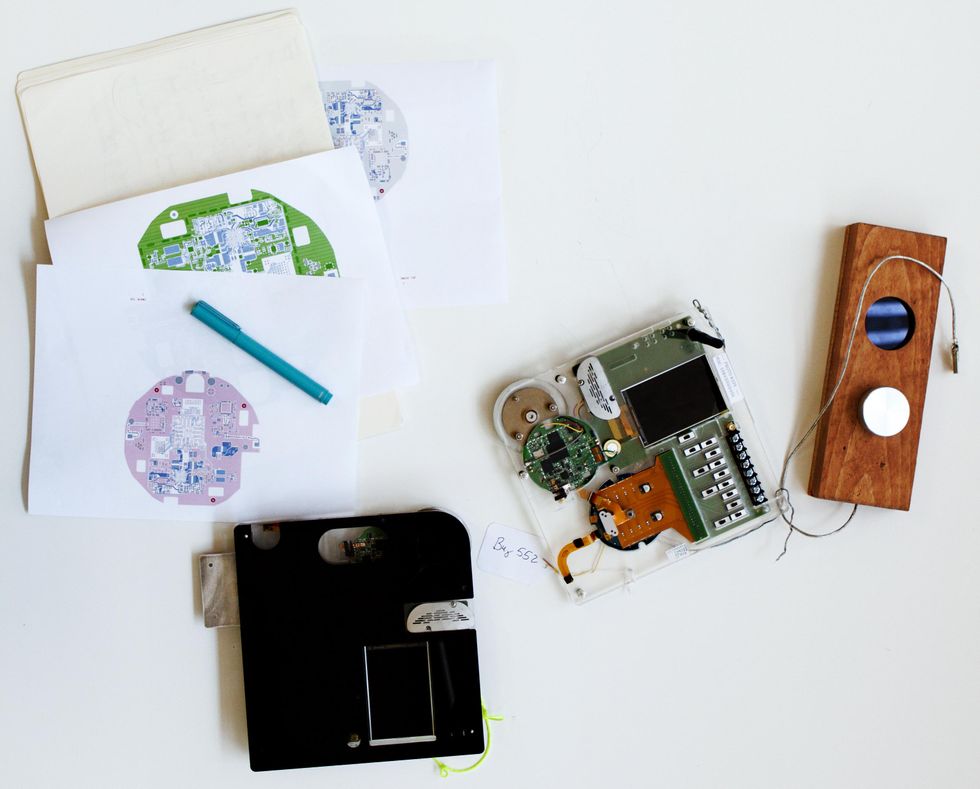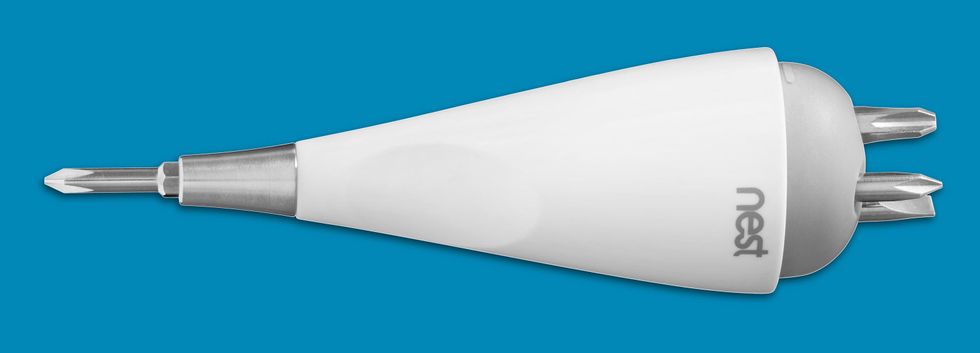Wireless Heater Made From a Leaf Skeleton Is Fully Biodegradable
[ad_1]
For most of the 10 years that I idly assumed about thermostats, I had no intention of creating just one. It was the early 2000s, and I was at Apple building the initially Iphone. I got married, experienced young ones. I was occupied.
But then all over again, I was also actually chilly. Bone-chillingly chilly.
Each and every time my wife and I drove up to our Lake Tahoe ski cabin on Friday evenings just after perform, we’d have to preserve our snow jackets on until finally the upcoming working day. The home took all evening to heat up.
Walking into that frigid residence drove me nuts. It was mind-boggling that there was not a way to warm it up before we bought there. I expended dozens of several hours and countless numbers of bucks seeking to hack safety and computer system products tied to an analog mobile phone so I could fireplace up the thermostat remotely. 50 percent my vacations had been used elbow-deep in wiring, electronics littering the ground. But nothing at all labored. So the initial evening of just about every journey was generally the same: We’d huddle on the ice block of a mattress, under the freezing sheets, looking at our breath change into fog right until the household at last warmed up by morning.
Then on Monday I’d go again to Apple and perform on the very first Iphone. Inevitably I realized I was making a ideal distant manage for a thermostat. If I could just join the HVAC method to my Apple iphone, I could regulate it from anyplace. But the engineering that I necessary to make it happen—reliable very low-expense communications, inexpensive screens and processors—didn’t exist nevertheless.
How did these unsightly, piece-of-crap thermostats expense practically as much as Apple’s most reducing-edge know-how?
A calendar year later we resolved to build a new, superefficient property in Tahoe. Throughout the day I’d work on the Iphone, then I’d arrive property and pore more than specs for our property, choosing finishes and elements and solar panels and, eventually, tackling the HVAC process. And when again, the thermostat came to haunt me. All the major-of-the-line thermostats ended up hideous beige bins with bizarrely bewildering user interfaces. None of them saved electricity. None could be managed remotely. And they price tag around US $400. The Iphone, in the meantime, was promoting for $499.
How did these unattractive, piece-of-crap thermostats price pretty much as much as Apple’s most chopping-edge know-how?
The architects and engineers on the Tahoe project heard me complaining over and more than about how crazy it was. I told them, “One day, I’m likely to deal with this—mark my terms!” They all rolled their eyes—there goes Tony complaining once more!
At 1st they were just idle phrases born of disappointment. But then factors commenced to adjust. The success of the Iphone drove down expenses for the subtle factors I couldn’t get my hands on previously. Abruptly higher-high quality connectors and screens and processors were getting produced by the tens of millions, cheaply, and could be repurposed for other engineering.
My lifetime was modifying, also. I quit Apple and began touring the globe with my household. A startup was not the prepare. The prepare was a break. A extended a person.
We traveled all about the globe and labored hard not to think about perform. But no subject exactly where we went, we could not escape a person factor: the goddamn thermostat. The infuriating, inaccurate, energy-hogging, thoughtlessly silly, unattainable-to-application, always-way too-very hot-or-as well-cold-in-some-part-of-the-household thermostat.
Anyone necessary to correct it. And inevitably I recognized that somebody was heading to be me.

This 2010 prototype of the Nest thermostat wasn’t quite. But generating the thermometer beautiful would be the quick element. The circuit board diagrams stage to the next step—making it round.Tom Crabtree
The major corporations weren’t likely to do it. Honeywell and the other white-box rivals hadn’t genuinely innovated in 30 years. It was a useless, unloved marketplace with much less than $1 billion in total yearly profits in the United States.
The only detail missing was the will to consider the plunge. I was not all set to carry one more startup on my again. Not then. Not alone.
Then, magically, Matt Rogers, who’d been just one of the initially interns on the iPod undertaking, reached out to me. He was a authentic associate who could share the load. So I allow the thought catch me. I came back again to Silicon Valley and obtained to work. I researched the technologies, then the possibility, the enterprise, the competitiveness, the persons, the financing, the background.
Building it beautiful was not likely to be difficult. Attractive components, an intuitive interface—that we could do. We’d honed those people capabilities at Apple. But to make this product or service successful—and meaningful—we desired to resolve two major problems:
It essential to save electrical power.
And we necessary to market it.
In North The united states and Europe, thermostats handle half a home’s vitality bill—something like $2,500 a year. Each and every past attempt to reduce that number—by thermostat manufacturers, by power providers, by govt bodies—had unsuccessful miserably for a host of distinctive factors. We had to do it for genuine, though holding it lifeless basic for buyers.
Then we necessary to offer it. Practically all thermostats at that point have been offered and installed by specialist HVAC experts. We have been never ever heading to split into that aged boys’ club. We had to locate a way into people’s minds very first, then their homes. And we had to make our thermostat so quick to install that basically anybody could do it them selves.
It took around 9 to 12 months of producing prototypes and interactive styles, building bits of application, conversing to consumers and gurus, and testing it with close friends prior to Matt and I resolved to pitch buyers.
“Real People” Exam the Nest
At the time we had prototypes of the thermostat, we sent it out to authentic people today to exam.
It was fatter than we needed. The display screen wasn’t pretty what I imagined. Form of like the first iPod, basically. But it worked. It related to your cellphone. It realized what temperatures you favored. It turned by itself down when no one was property. It saved electricity. We understood self-set up was most likely a enormous stumbling block, so anyone waited with bated breath to see how it went. Did men and women shock on their own? Begin a fire? Abandon the undertaking halfway as a result of for the reason that it was too sophisticated? Before long our testers noted in: Set up went good. People today beloved it. But it took about an hour to install. Crap. An hour was way much too extensive. This necessary to be an straightforward Do-it-yourself challenge, a fast upgrade.
So we dug into the reports—what was using so very long? What were being we missing?
Our testers…invested the initially 30 minutes searching for resources.
Turns out we weren’t lacking anything—but our testers were. They used the to start with 30 minutes searching for tools—the wire stripper, the flathead screwdriver no, wait around, we need a Phillips. Where by did I set that?
When they collected everything they required, the rest of the installation flew by. 20, 30 minutes tops.
I suspect most corporations would have sighed with reduction. The genuine installation took 20 minutes, so that is what they’d explain to consumers. Wonderful. Challenge solved.
But this was heading to be the to start with moment individuals interacted with our device. Their 1st experience of Nest. They were buying a $249 thermostat—they ended up expecting a diverse kind of working experience. And we desired to exceed their expectations. Every moment from opening the box to looking through the guidelines to obtaining it on their wall to turning on the warmth for the first time had to be very easy. A buttery, heat, joyful experience.
And we knew Beth. Beth was 1 of two prospective clients we outlined. The other shopper was into technological innovation, loved his Apple iphone, was generally hunting for neat new gizmos. Beth was the decider—she dictated what manufactured it into the property and what bought returned. She beloved stunning factors, too, but was skeptical of supernew, untested technologies. Seeking for a screwdriver in the kitchen drawer and then the toolbox in the garage would not make her sense warm and buttery. She would be rolling her eyes. She would be frustrated and annoyed.

Transport the Nest thermostat with a screwdriver “turned a minute of frustration into a moment of delight”Dwight Eschliman
So we changed the prototype. Not the thermostat prototype—the set up prototype. We added 1 new component: a small screwdriver. It had 4 distinctive head selections, and it suit in the palm of your hand. It was sleek and cute. Most importantly, it was unbelievably helpful.
So now, as an alternative of rummaging via toolboxes and cabinets, striving to obtain the ideal instrument to pry their old thermostat off the wall, shoppers merely arrived at into the Nest box and took out specifically what they wanted. It turned a moment of aggravation into a second of delight.
Honeywell Laughs
Sony laughed at the iPod. Nokia laughed at the Iphone. Honeywell laughed at the Nest Finding out Thermostat.
At initial.
In the phases of grief, this is what we contact Denial.
But soon, as your disruptive merchandise, approach, or small business design starts to get steam with prospects, your competitors will begin to get concerned. And when they recognize you might steal their marketplace share, they’ll get pissed. Actually pissed. When persons strike the Anger phase of grief, they lash out, they undercut your pricing, consider to embarrass you with advertising and marketing, use destructive press to undermine you, put in new agreements with sales channels to lock you out of the market.
And they may possibly sue you.
The superior information is that a lawsuit usually means you’ve officially arrived. We experienced a get together the working day Honeywell sued Nest. We ended up thrilled. That ridiculous lawsuit meant we had been a true danger and they realized it. So we introduced out the champagne. That is right, f—ers. We’re coming for your lunch.
Nest Gets Googled
With each era, the products grew to become sleeker, slimmer, and significantly less costly to establish. In 2014, Google acquired Nest for $3.2 billion. In 2016 Google determined to promote Nest, so I still left the business. Months soon after I left, Google altered its head. Nowadays, Google Nest is alive and nicely, and they’re still building new products and solutions, building new activities, delivering on their edition of our vision. I deeply, genuinely, wish them perfectly.
From Your Web site Content
Linked Articles or blog posts All-around the Net
[ad_2]
Resource link
